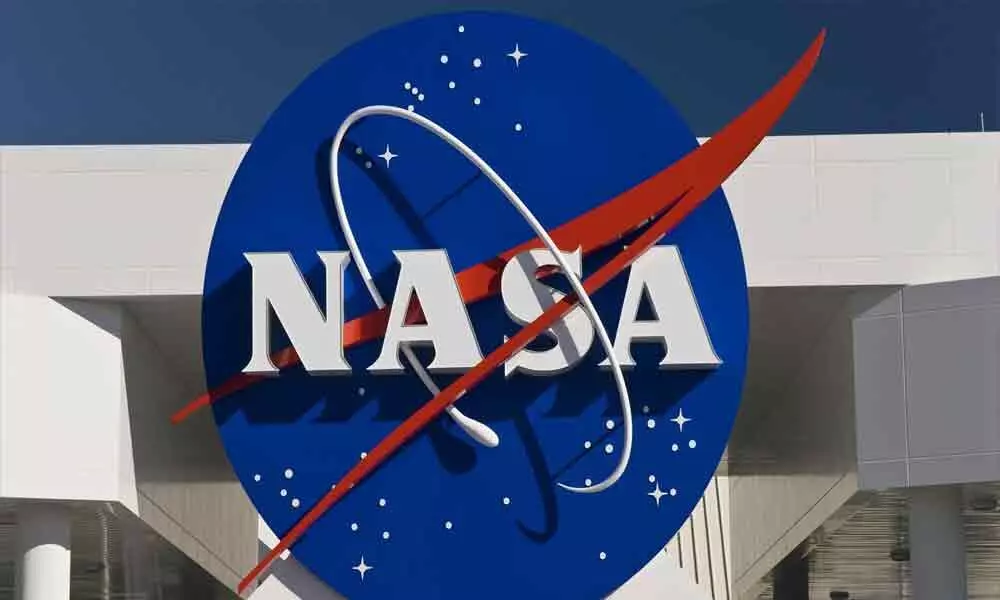Live
- Thief snatches woman’s chain inside home in Kukatpally
- Strict measures in Place for AP SSC examinations
- Kancha Gachibowli land: Activists launch campaign to preserve urban lung space
- GHMC proposes euthanasia for aggressive strays
- Over 6 lakh Olive Ridleys turn up at Gahirmatha
- Two women journos held for ‘defaming’ CM
- 25 lakh ‘Lakhpati Didis’ in next 5 years: Patra
- Villagers come together against illegal mining
- NALCO holds Customers’ Meet
- Notorious criminal injured in encounter
NASA shares $28bn plan to return humans to Moon in 2024


National Aeronautics and Space Administration
NASA has shared an update on its Artemis programme, including the latest plans to land the first woman and the next man on the surface of the Moon in 2024 at a cost of nearly $28 billion.
Washington:NASA has shared an update on its Artemis programme, including the latest plans to land the first woman and the next man on the surface of the Moon in 2024 at a cost of nearly $28 billion.
However, according to NASA Administrator Jim Bridenstine, meeting the tight deadline set by the Donald Trump administration would depend a lot on Congress approving $3.2 billion quickly for the development of human-rated lunar landers, according to a report in Spaceflight Now on Monday.
NASA had earlier proposed a plan to return humans to Moon by 2028.
In the 18 months since NASA accepted the "bold" challenge to accelerate its exploration plans by more than four years and establish sustainable exploration by the end of the decade, the agency has continued to gain momentum toward sending humans to the Moon again for the first time since the last Apollo lunar mission in 1972.
"With bipartisan support from Congress, our 21st century push to the Moon is well within America's reach," said Bridenstine.
"As we've solidified more of our exploration plans in recent months, we've continued to refine our budget and architecture. We're going back to the Moon for scientific discovery, economic benefits, and inspiration for a new a generation of explorers."
The NASA Administrator said that the agency is also building momentum "toward those first human steps on the Red Planet."
The agency's powerful new rocket, the Space Launch System (SLS), and the Orion spacecraft are closer than ever to their first integrated launch, NASA said.
The spacecraft is complete while the core stage and its attached four engines are undergoing a final series of tests that will culminate in a critical hot fire test this autumn.
Following a successful hot fire test, the core stage will be shipped to the agency's Kennedy Space Center in Florida for integration with the spacecraft.
NASA will launch an SLS and an Orion together on two flight tests around the Moon to check performance, life support, and communication capabilities.
The first mission -- known as Artemis I -- is on track for 2021 without astronauts, and Artemis II will fly with crew in 2023.
While preparing for and carrying out these flight test missions, NASA already will be back on the Moon robotically - using commercial delivery services to send dozens of new science investigations and technology demonstrations to the Moon twice per year beginning in 2021.
In 2024, Artemis III will be humanity's return to the surface of the Moon - landing the first astronauts on the lunar South Pole.
After launching on SLS, astronauts will travel about 240,000 miles to lunar orbit aboard Orion, at which point they will directly board one of the new commercial human landing systems, or dock to the Gateway to inspect it and gather supplies before boarding the landing system for their expedition to the surface.
The Gateway will be an outpost orbiting the Moon that provides vital support for a sustainable, long-term human return to the lunar surface, as well as a staging point for deep space exploration.
Wearing modern spacesuits that allow for greater flexibility and movement than those of their Apollo predecessors, astronauts will collect samples and conduct a range of science experiments over the course of nearly seven days.
Using the lander, they will return to lunar orbit before ultimately heading home to Earth aboard Orion, NASA said.

© 2025 Hyderabad Media House Limited/The Hans India. All rights reserved. Powered by hocalwire.com






